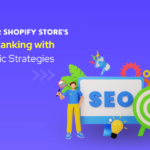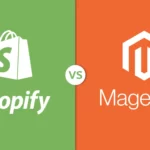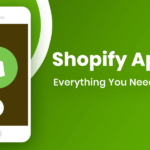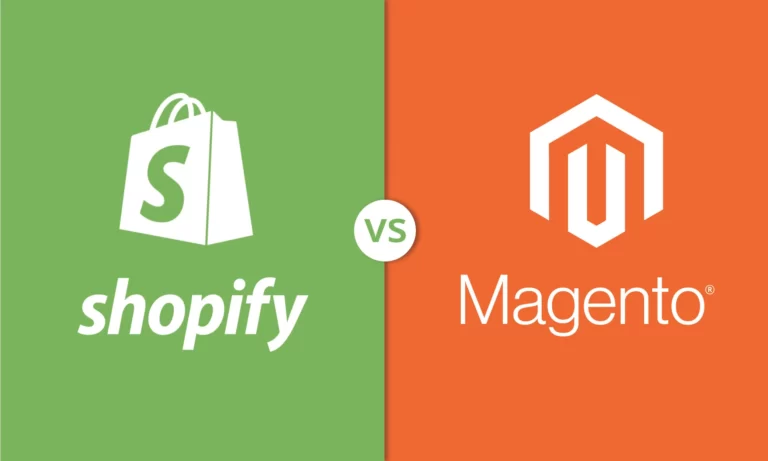If you’re here and you’re here, it’s because you’re looking to sell online, but you’re not sure of the best platform for you. You’ve likely narrowed it in the direction of Shopify and Etsy you are now trying to decide. It’s a good thing! You’re at the right spot because what you’ll see next will be a thorough analysis of both eCommerce platforms.
In this article we’ll look at the distinctions in Shopify as well as Etsy regarding features, user-friendliness pricing, additional fees and the design. Also, you’ll learn about the types of products you can offer on each platform as well as what tools you can utilize to boost sales on your online store.
Let’s get started.
What is the difference between Shopify being better than Etsy?
Before diving into the facts it’s possible to ask what the reason behind looking at Shopify against Etsy specifically. This article is designed for small or individual businesses who require a platform to begin selling online, Etsy and Shopify are among the most popular and effective platforms for those who want to make their first steps in the eCommerce market.
If you’ve never previously sold your products online before, then you might want to consider these two platforms since they’re both user-friendly and simple to create. However, based on your requirements you’ll be able to see the differences between them with regard to the target audience and setup procedures, prices and customizing.
Shopify and Etsy Which is best for you?
After this short introduction, let’s move on to the point where we look at the comparison between Shopify and Etsy in a head-to-head comparison. We’ll then break down the key elements that make these two platforms different. However, even though they’re different, you’ll find some similarities too.
How do you make Shopify distinct from Etsy? Let’s look at it by comparing these two services:
1. Features
This section will be talking about the various options available on Shopify and Etsy provide to you, as well as what kinds of items you can sell on these platforms.
Website builder vs marketplace
It is essential to define the main distinction of Shopify as well as Etsy. Shopify can be described as a site builder, and Etsy is an online marketplace. What is the significance of this?
A website builder gives you all the features and tools required to build your own eCommerce site. If you opt for Shopify as your platform, you need to make an online store for you to sell your goods.
There’s a solution, however. If you have an existing blog or website and you’re not required to start constructing a new site completely from scratch. You can instead make use of Shopify to develop various sales channels that you can offer to your customers, for instance, the addition of “Buy buttons” on your existing sites. In order to do that, you’ll require Shopify Lite. Shopify Lite Plans.
Etsy however, to the contrary is a marketplace that lets you sign up and can then start selling your products. In addition, you can modify the dashboard and store’s front end it is not necessary to create anything or even an additional website.
All you need, in order to get started on Etsy, is to register accounts and establish your store. It’s simple; Etsy guides you very precisely by guiding you through each step. Through the process, you will need to enter your shop’s preferences (such as country name and language) and then add your first listing, enter your bank account details (where you’ll get your money), and then enter your information for billing.
What are the products you can offer on Shopify as opposed to Etsy?
Shopify and Etsy differ in the type of products you can offer. While Shopify offers a wider range of products (you can sell virtually everything as long as you comply with Shopify’s Acceptable Policy for Use Acceptable Policies), Etsy targets particular sellers. Etsy is an online store that focuses on vintage and handmade items as well as craft tools and supplies.
Both Shopify as well as Etsy platforms, you are able to sell unlimited digital and physical products. However, there are charges you have to pay. For instance, you’ll have to purchase a subscription to utilize Shopify’s service (pricing starts at $9/month) and Etsy is completely free however, it charges $0.20 to list your item, in addition to various other charges. Further details on the costs associated with selling on Shopify in comparison to Etsy in the future.
Products
When it comes to including products in your store, here’s another table that outlines all you should know about conditions and limitations on the way you can display items on Shopify and Etsy:
In the case of your product pages, they can be designed to look similar across both platforms. The traditional eCommerce appearance is one we’ve come to accustomed to over time.
Custom domains
For custom domains, the process is much faster on Shopify since the basic plan lets you make use of an individual domain. On Etsy however, you are able to get the custom domain option if you already own a site that redirects your website’s URL directly to an Etsy shop. It is also possible to purchase a domain through an online domain name generator such as Domain Wheel or Domain Wheel, and then forward it to Etsy.
Languages, currencies and sales channels
Shopify is accessible in a variety of languages, including 20 this means you are able to adapt your web store to meet your customers’ preferences in terms of language. For different currencies available, Shopify also leaves room for flexibility to its customers with a range of 130 currencies.
If you are looking to sell products through Shopify using other channels other than your own site you have the option of choosing among a number of different sales channels. There is a Shop app that is available for Android or iOS clients, Facebook, and Instagram Buy Buttons to connect Shopify to your current site (no matter which platform you’re using), Google, Messenger, Wholesale, and Handshake.
Etsy is less limiting as compared to Shopify in this respect. It’s available in more than 10 languages and in 30 currencies. For example, if you’re selling in the EU The default currency is EUR and not the country’s currency (if you use an alternative national currency). That means that the prices that are displayed alongside your items will be in EUR and you’ll be charging customers in EUR too.
In terms of the various ways to sell, Etsy does let you extend your network too. When you access the dashboard of your Shop Manager, Sales Channels – Etsy you’ll discover several selling strategies to connect with Etsy.
Dropshipping
Etsy and Shopify can both be capable of handling dropshipping.
You can organize your store to ensure that you don’t have any inventory, or make any changes to your merchandise prior to selling them.
If you’re unsure of what dropshipping is or what it does Here’s a guide to begin a dropshipping company. It explains the entire procedure in depth.
Integrations
Shopify has an application store where you can search for additional functionality that you can integrate into an online shop. There you can discover applications developed by Shopify’s Shopify team as well as third-party tools that can integrate into your Shopify configuration. You just need to search for what you require and you’ll receive a plethora of suggestions for every query. It is possible to integrate Shopify together with Etsy.
Etsy is also able to adapt to integrating it with third-party applications and tools. All you have to do is go into Your Shop Manager and then click Integrations. You will be able to see numerous apps available to improve your Etsy store’s capabilities. If you’d like to expand your offerings features, you can make use of an application such as Automate.io and finish your task in just a few only a few minutes.
2. Easy to use
Let’s take a look at how simple it is to sell your products on Shopify as opposed to Etsy. The process of onboarding is simple for both platforms, in terms of you only have to follow the steps after which your store will be online and can sell items.
When using Shopify it is necessary to register to the plan you wish to purchase and then go through the set-up procedure. Answer some questions, enter your personal information and then enter your store’s name. This is it for the set-up!
If you’re interested in more in-depth explanations of Shopify’s interfaces as well as the process for launching a store take a look at our step-by-step guide here.
When your store is online and you’re ready to add your first items. The interface is easy to navigate, user-friendly for any type of user and features a contemporary design. Anything you’ll need to fill out is the system as it guides you through the essential aspects of starting selling online.
Begin by adding your products and customizing the design and then adding the domain. You can also save the data of your customers as well as add gift cards to monitor orders, review the site’s analytics and create advertising campaigns. All of this is done with an intuitive user interface. There is no confusion within Shopify.
A lot of the process for signing up for Etsy is similar to that of Etsy. The first step is to create an account that is required for the launch of your shop. You must supply all the billing and payment details at the beginning and also your shop’s preferences. After the store is set up and running, you can begin adding the listings you’d like. It is important to establish all the important information needed for each listing, like a description of the item, shipping cost of inventory, photos, categories, etc. It’s easy to set up using Etsy’s intuitive interface. The shop’s page is where you are able to explain your business, establish shop policies with Etsy’s pre-designed templates upload banners, make banners, offer discounts, and design marketing campaigns (SEO marketing social media optimization communities and many more).
3. Design
Shopify is more flexible as it comes with a selection of designs (free or premium) from which you can pick from to fit your store’s goal. Etsy even though it’s an online marketplace and not a website builder like Shopify it allows you to alter the layout of your shop by using its pattern feature that essentially designs templates. Beyond the designs, The main distinction in between Shopify and Etsy is the variety of design options each platform has. Shopify has more than 80 templates to choose from, whereas Etsy has 10 templates.
You can personalize the appearance of your Shopify or Etsy shops using a separate platform’s dashboard.
4. Additional fees and expenses
We’ll shed light on this area before discussing the costs of the fees and costs do not include the pricing plans offered by Shopify as well as Etsy. It’s about the extra charges you will have to bear in relation to the services you’ve enabled in your store.
Here’s what you’ll need to pay in addition to selling online via Shopify in comparison to Etsy:
Shopify
Shopify plans include some additional fees, including transaction and credit card fees that are applicable in the following situations (these figures are applicable to only the US only and can vary according to the country):
- Credit card online fees 2.9% + 30C/ USD 2.9 percent plus 30C USD
- In-person credit card charges 2.7% + 2.7 percent + 0.7%/ USD
- Transaction fees if you are not making use of Pay with Shopify — 2.0 percent of each sale
Let’s discuss the meaning of these transaction fees. Shopify offers an in-built payment platform called Shopify Payments that can be used on your website to avoid additional costs. Shopify Payments isn’t accessible across all nations currently, so you’ll have to connect Shopify with the help of a third-party gateway for payments if this is your situation. Also, as you’ve already seen If you’re not using Shopify Payments, you have to pay a fee for sales.
Etsy
In the case of Etsy is concerned there are fees you must pay for selling your products on Etsy:
- Fees for listing on HTML0 are $0.20 for each item or product you sell on the website or through Etsy’s mobile applications. The listing expires after 4 months and requires $0.20 each time you wish renewal. If you have multiple versions of the same product you will not be charged for each listing, but you’ll be charged an additional $0.20 in the event that someone purchases another variation of the particular product.
- Fees for transactions 5% of the sum total that you charge for your product plus your charges for gift wrapping, shipping and personalization costs. This is applicable to every sale you make through Etsy.
- In-person selling charges (in-person selling fees) $0.20 transaction fee for those who don’t make use of your square reader to pay for sales in person. If you are able to sync your Etsy listings to Square and Square reader, you’ll be charged a separate fee, this time making use of this Square reader.
- Shipping costs up to 5% of the total cost for shipping when you charge the customer separately for shipping.
- Processing fees for payment The company Etsy charges fees for every transaction that is made using Etsy payments. It typically varies depending on the country you live in and your bank account, and is determined from the total cost of your item. It also includes shipping costs, and any other taxes applicable to sales.
5. Pricing plans
We’ve covered all kinds of charges that Shopify as well as Etsy charge to use their services However, that’s not all you should be aware of the financial aspects. Each eCommerce platform comes with pricing plans that give you access to more options and features for your company.
Let’s review the Shopify comparison with Etsy price plans.
Shopify pricing plans
- Shopify Lite 9 dollars monthly (if you don’t wish to build a website)
- The basic version of Shopify $29/month (for eCommerce companies that are just beginning their journey)
- Shopify $79 per month (for companies that are growing and have both an online presence and a physical store)
- Advanced Shopify 299 dollars per month (for companies that are growing and require sophisticated selling and reporting strategies)
- Shopify Plus – – $2,000+ each month (enterprise solutions to handle large volumes of sales)
If you’re interested in learning more about the differences between different pricing packages offered by Shopify, we’ve covered it all in this article. It will explain what you’ll get when you pay more, and what the advantages and disadvantages of the different plans are.
Etsy price plans
- Standard Standard (but you must pay the additional fees we discussed above)
- Plus $10 per month (includes customized shop options discount, restock request, discounts and credit for a variety of marketing services)











